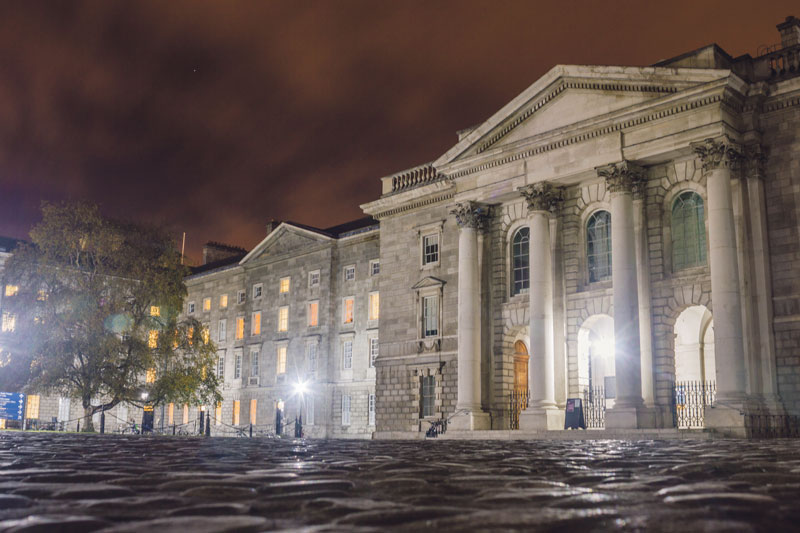
It was the morning after a heavy night of drinking – crisp and autumnal with a stretch of dappled sunbeams hitting Front Square like an army of lightsabers. Alas, being not so fresh, I made my way across campus in a baseball cap, shades and a hoodie. It was a remarkably sedate morning, the lively ambiance reduced to a mellow hum like a simmering pot of tomato soup. As I proceeded across the sea of cobbles, the chapel breezed into my periphery. There it stood, as it has for 240 years, with the presence and command of an otherworldly being. Its bright, mottled facade akin to the face of a full moon. It stood out from the pastel court like a bright set of teeth to which everything gravitated towards.
The monumentality of this imposing beauty cannot be ignored. At the time of its construction, it would have been one of the most substantial buildings in Dublin. At the heart of its facade lies a free-standing tetrastyle portico of colossal proportion. The dominant, Corinthian columns standing tall and sturdy like the four legs of an ancient, white mammoth. Beyond this lies a vaulted vestibule acting as a transitional space between the vastness of Front Square and the cocoon of the chapel interior.
The playful use of exterior textures adds to the overall sumptuousness of the building. Vigorous rustication wraps around the ground floor like a belt, juxtaposed against the smooth, clean-cut upper stories. The walls glisten with granite ashlar, while the portico and window cases are of chalky Portland stone, an exclusive rock used only on the finest buildings of the British empire at the time. Completed at an earlier date, the Public Theatre – more commonly known as the Exam Hall – sits directly opposite, facing north and casting a cold, mauve shadow over Front Square.
It is perhaps the slightly less attractive identical twin. Both were designed by architectural wizard, William Chambers, the same man responsible for the design of London’s Somerset House. However, under mysterious circumstances, Chambers abandoned the chapel, leaving it to be completed by Christopher Myers in 1778.
Upon entry, the eye is drawn up to an elliptical vaulted ceiling richly embellished with stucco work, the delicacy of which harmonizes with the choral flair of Trinity vocalists. Yet the most astonishing aspect of the interior is, without a doubt, the great organ which sits enthroned above the entrance. Gold leaf meanders up the 17th-century pipes like a precious snail trail, the rich mahogany carving filled with movement. The organ has a life of its own! As the great organ continues to produce the same sound as it has since the beginning of its life, the sounds within the chapel have utterly changed. Alas, it is no longer a house exclusive to the man upstairs.
Instead, he shares his accommodation with the movers and shakers of the Dublin music scene, providing a venue with near acoustic perfection. In fact, Hozier was so enamored by the chapel that he wrote a song about it called “Take me to Church”. So next time you’re at Trinity Ball and feel the need to chunder, think twice about letting loose on the steps of this remarkable structure.






